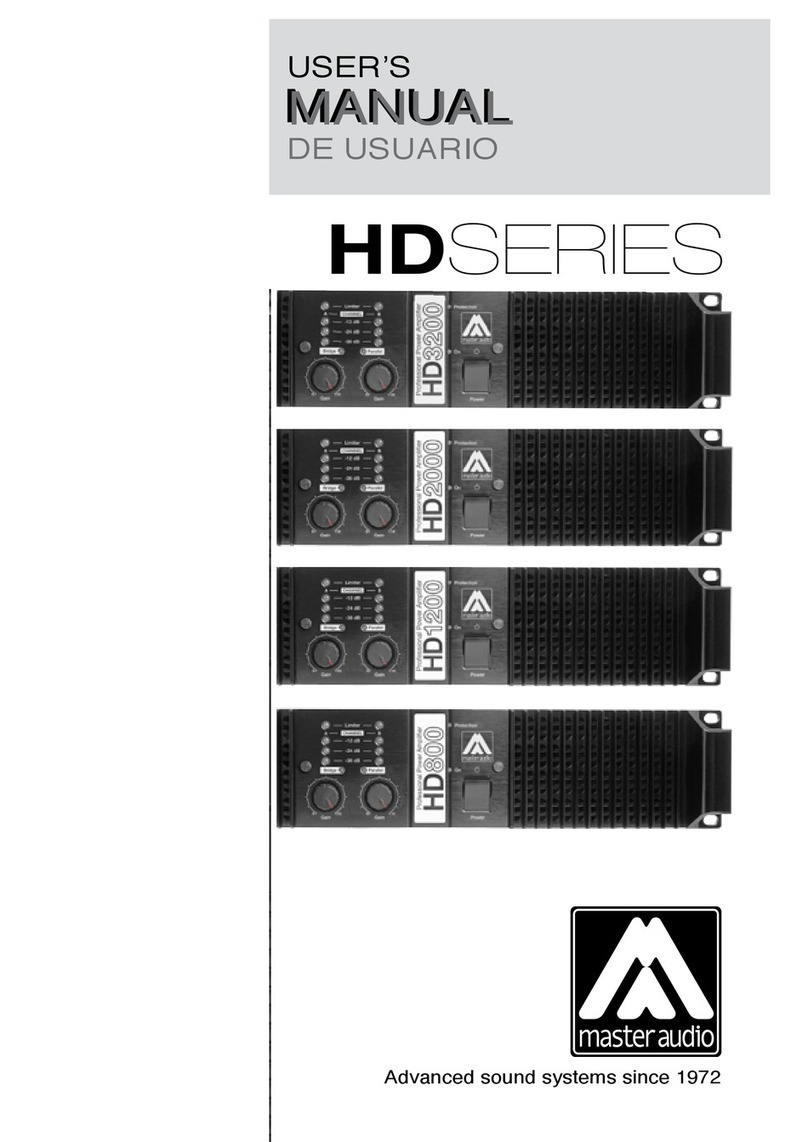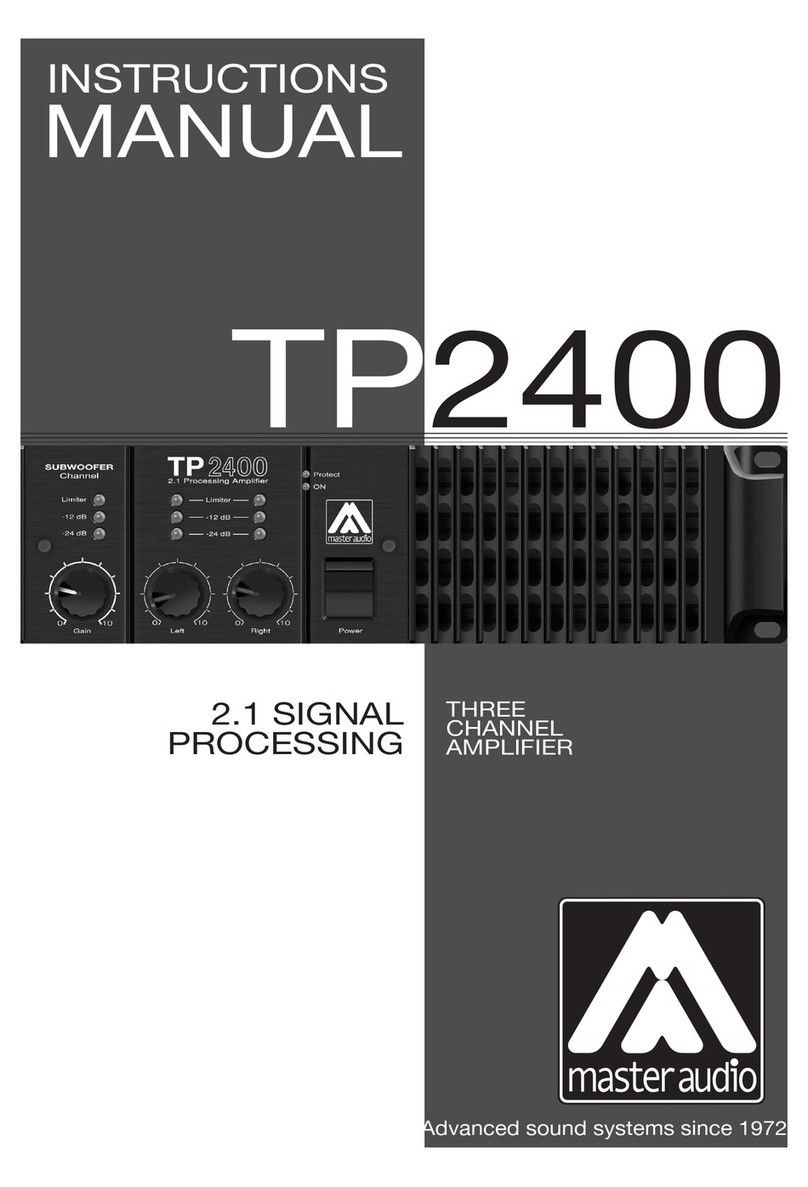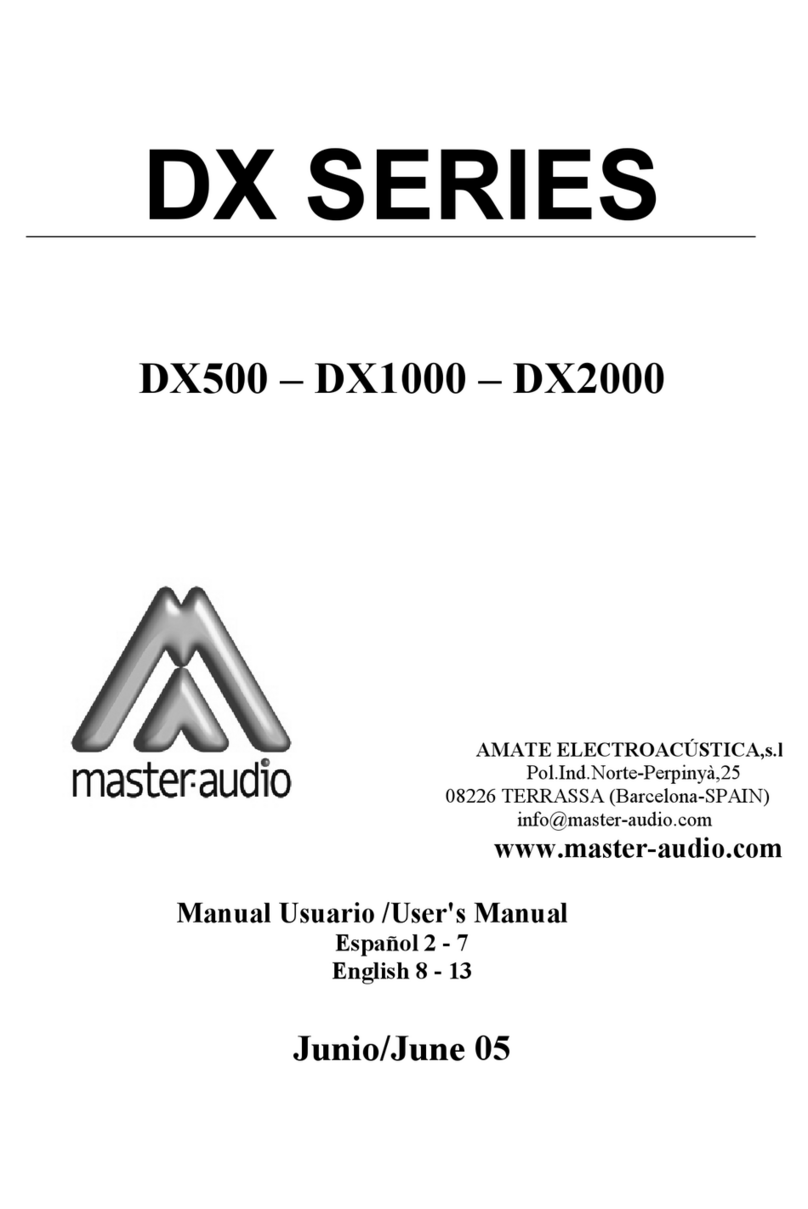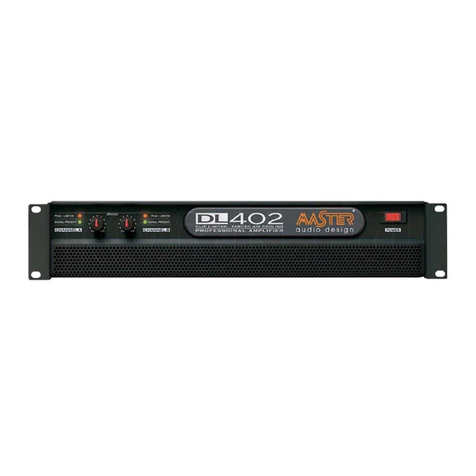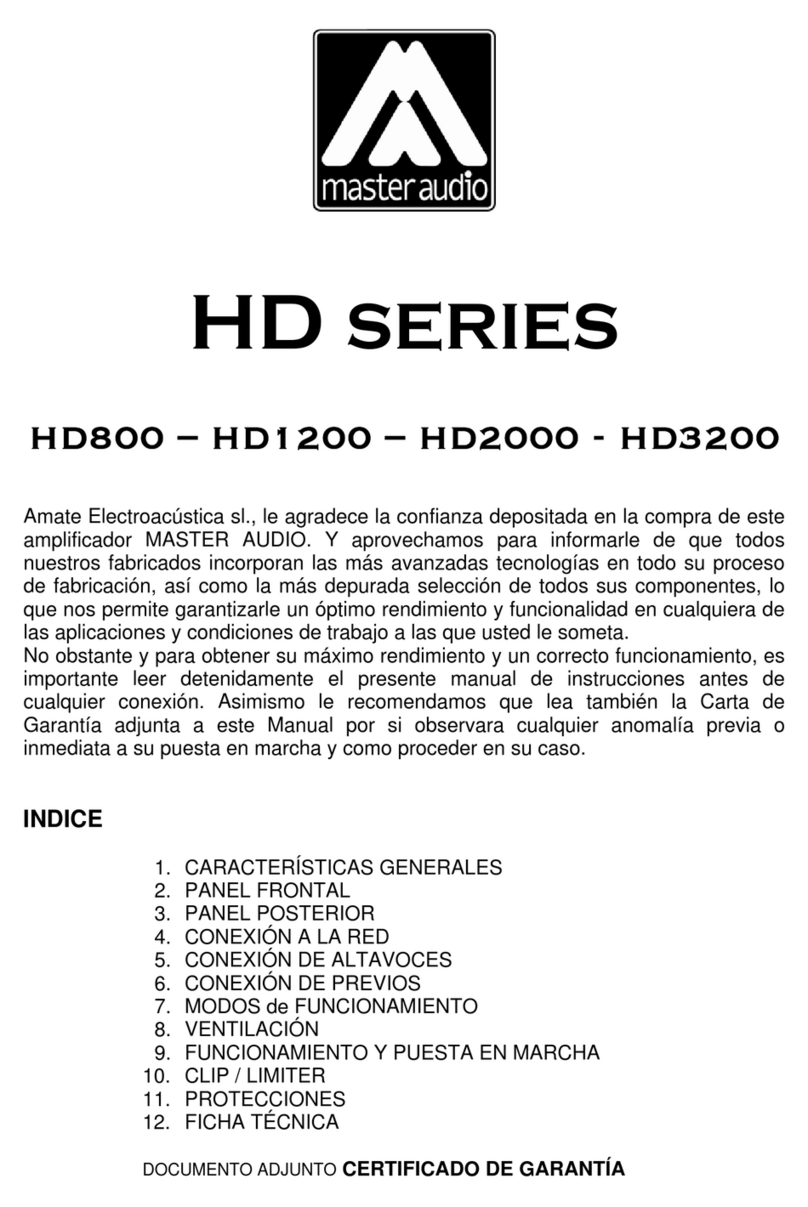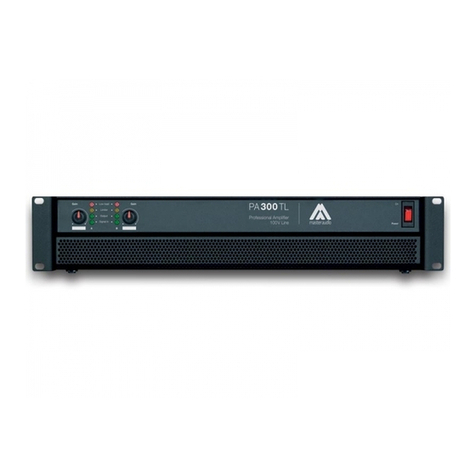Para su utilización en modo MONO, debe colocarse el conmutador MODE, DIP
switch 3 y 4 en posición ON. En esta circunstancia se iluminará el indicador
correspondiente situado en el panel frontal sobre el control del Canal A (BRIDGE).
La ganancia se controlará únicamente mediante el potenciómetro del canal A.
ATENCIÓN: En este modo de funcionamiento se recomienda utilizar una carga de 8
Ohms. Si la impedancia de la carga es de 4 Ohms, cada módulo trabajará a una
carga equivalente de 2 Ohms, con lo que no es recomendable utilizarlo en
instalaciones permanentes en este modo. Consultar la tabla de características
técnicas para conocer la potencia entregada en modo Bridge.
PRECAUCIÓN: Puede resultar peligroso manipular los contactos en esta situación
por personal no especializado,dada la elevada tensión entregada.
8 - VENTILACIÓN
Los amplificadores SM Series están dotados de ventilación forzada controlada
electrónicamente mediante turbinas situadas en la parte posterior. Disponen de dos
velocidades de giro en función de la temperatura. Es muy importante favorecer la
buena circulación de aire para mantener el equipo en un régimen de temperatura de
trabajo estable, razón por lo que hay que evitar cualquier posible obstrucción tanto
en su parte posterior como la frontal. Asimismo hay que evitar su instalación cercana
a fuentes generadoras de calor o carentes de ventilación (armarios cerrados).
ATENCIÓN: Como la circulación del aire forzado puede conllevar la introducción de
restos de polvo y suciedad en general sobre los carriles de disipación del calor
(radiadores) internos, es sumamente recomendable y preciso realizar una operación
de limpieza interna periódicamente, al menos una vez al año dependiendo de las
circunstancias particulares de cada instalación.
NOTA: Cualquier deterioro del amplificador causado por una evidente presencia de
suciedad y/o humedad interna, EXCLUIRÁ cualquier derecho de aplicación de la
Garantía prevista para este producto.
9 - FUNCIONAMIENTO Y PUESTA EN MARCHA
Una vez que se ha realizado correctamente el conexionado de red, altavoces y
fuentes de sonido (entradas), poner en marcha primero las fuentes previas y a
continuación pulsar el interruptor. A continuación giraremos los controles de volumen
en el sentido de las agujas del reloj, hasta el nivel de ganancia deseado.
El amplificador consta además de un circuito de arranque suave (Soft-Start), que
garantiza una puesta en marcha progresiva sin provocar ruidos extraños en los
altavoces.
Para obtener un mejor rango dinámico, es recomendable trabajar siempre con los
controles de volumen al máximo y regular la potencia de salida mediante el nivel de
la señal a la entrada del amplificador (regulando mediante el mezclador o la fuente
sonora correspondiente: crossover, ecualizador, procesador, etc.).
